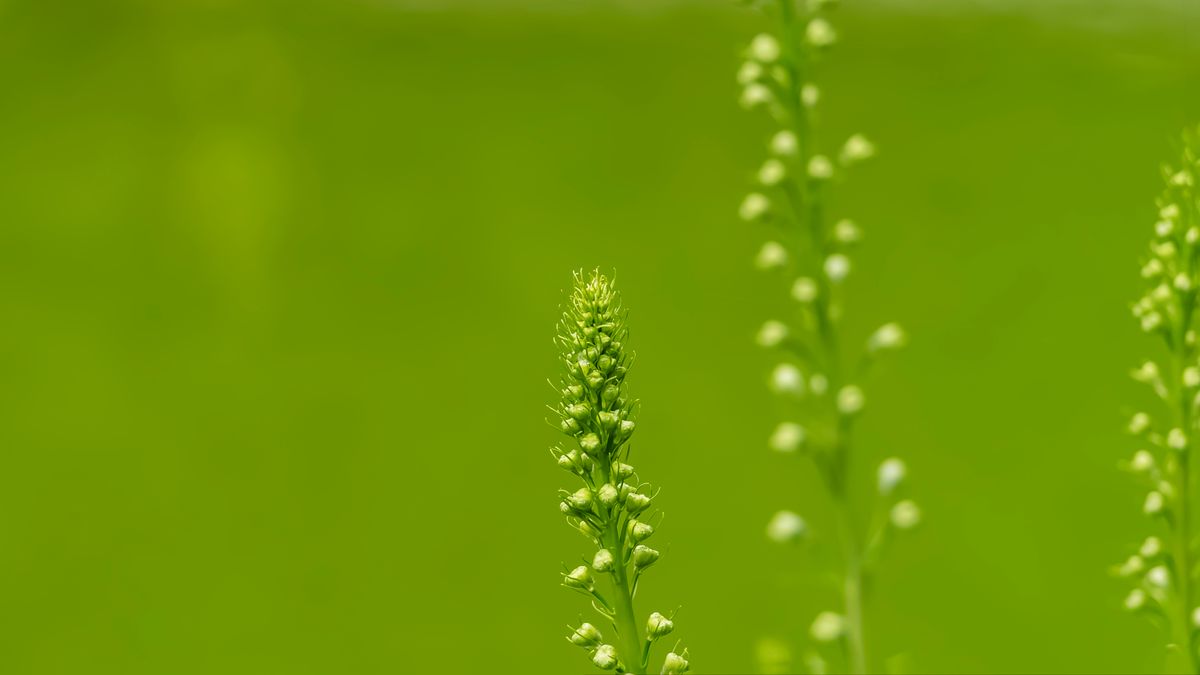Coontie, a prehistoric plant with a rich history, is experiencing a resurgence in popularity as more people recognize its value in modern landscapes. In this article, we explore the reasons behind Coontie’s comeback and provide insights on how to cultivate this resilient plant in your own garden.
Key Takeaways
- Coontie is a resilient plant with a fascinating history that makes it a valuable addition to modern landscapes.
- Growing Coontie can contribute to ecosystem restoration efforts by supporting native plant species.
- Choosing the right location for Coontie is crucial for its growth and survival in your garden.
- Caring for Coontie plants involves providing well-drained soil, adequate sunlight, and occasional watering.
- Harvesting and using Coontie seeds can be a rewarding experience, allowing you to propagate this ancient plant for future generations.
Why Coontie is Making a Comeback

The Fascinating History of Coontie
The coontie, a plant with a lineage stretching back to the time of the dinosaurs, is more than just a garden curiosity. Its resilience and adaptability have allowed it to survive through the ages, making it a living piece of history right in our backyards. This ancient plant, once a staple food source for indigenous peoples, has seen its role in human life evolve dramatically over the centuries.
In the early 1900s, coontie was nearly harvested to extinction for its valuable starch, but today, it’s making a remarkable comeback. Gardeners and landscapers are rediscovering the coontie for its low-maintenance needs and its ability to thrive in warm climates, much like the Clusia hedges that offer privacy and aesthetics. Here’s a quick look at coontie’s journey:
- Prehistoric times: Coontie thrives alongside dinosaurs.
- Indigenous use: A crucial food source for native tribes.
- Commercial exploitation: Overharvested for starch in the 20th century.
- Modern resurgence: Valued for its durability and ecological benefits.
As we continue to explore the coontie’s past, we uncover more than just a plant; we find a story of survival and versatility. It’s no wonder that the coontie, or as some might say, the ‘Florida arrowroot,’ is often featured in lists of unbelievable facts about plants. Its history is as rich and complex as the ecosystems it helps to sustain.
Benefits of Growing Coontie
Coontie plants are not just a nod to prehistoric times; they offer tangible benefits for today’s gardeners. They’re a low-maintenance choice that thrives in the heat and sandy soil common in many regions, making them a practical addition to modern landscapes.
Here are some reasons why gardeners are going gaga for Coontie:
- Attracts wildlife: As a native plant, Coontie provides a familiar habitat and food source for local fauna. Planting Coontie can help attract a variety of wildlife, including the atala butterfly, which relies on it exclusively during its larval stage.
- Drought-resistant: Once established, Coontie plants are incredibly drought-tolerant, requiring minimal watering. This makes them an eco-friendly option that conserves water.
- Pest-resistant: Coontie’s natural resilience means it’s less prone to pest problems, reducing the need for chemical pesticides.
Incorporating Coontie into your garden isn’t just about aesthetics; it’s a step towards creating a more sustainable and wildlife-friendly environment. By choosing Coontie, you’re not only embracing a piece of ancient history but also contributing to the conservation of local ecosystems.
Tips for Cultivating Coontie
Getting your Coontie to thrive isn’t rocket science, but it does love a bit of attention during its early days. Regular watering is key when you’re just getting started. This helps your prehistoric pal set down roots and get comfy in its new home. But once it’s settled, Coontie is pretty chill and can handle the occasional drought like a champ.
Here’s a quick cheat sheet for your Coontie care routine:
- Full sun to partial shade? Check!
- Well-drained, sandy soil? You got it!
- Ease up on the H2O once it’s established? Absolutely.
Remember, Coontie is a slow-grower, so patience is part of the package. Give it time, and you’ll have a lush, low-maintenance buddy adding a touch of the Jurassic to your garden.
Coontie: A Resilient Plant of the Past

Adapting Coontie to Modern Landscapes
Bringing the prehistoric coontie into the present means meshing its ancient charm with contemporary garden designs. Adapting this resilient plant to modern landscapes isn’t just about aesthetics; it’s a step towards ecological mindfulness. By integrating coontie into your garden, you’re not only adding a touch of prehistoric intrigue but also contributing to habitat restoration.
When considering coontie for your landscape, think about how it can complement your existing design. Here’s a quick list to get you started:
- Assess the sunlight in your garden; coontie thrives in partial shade.
- Consider the soil conditions; coontie prefers well-drained soils.
- Explore creative downspout landscaping ideas with rocks to enhance curb appeal.
Remember, growing Coontie Cycad is more than just gardening; it’s a personal nod to conservation. You’re restoring native landscapes, one plant at a time, and fighting the good fight against habitat loss. So, when you plant coontie, you’re not just beautifying your space—you’re actively participating in a larger movement to preserve our planet’s biodiversity.
Coontie’s Role in Ecosystem Restoration
Coontie plants aren’t just a throwback to prehistoric times; they’re modern-day superheroes in the world of ecosystem restoration. Their resilience and low maintenance make them ideal candidates for natural landscaping projects. But it’s not just about aesthetics; coontie plays a crucial role in the survival of certain wildlife species.
For instance, the atala butterfly, a species that was once on the brink of extinction in Florida, relies exclusively on coontie as a food source for its larvae. The coontie’s natural toxins are ingested by the caterpillars, which in turn become poisonous to predators. This symbiotic relationship highlights the importance of coontie in maintaining biodiversity and the balance of local ecosystems.
- Atala Butterfly: Once nearly extinct, now thriving thanks to coontie.
- Natural Toxins: Coontie’s defense mechanism that protects caterpillars.
- Biodiversity: Coontie supports a variety of wildlife, contributing to a healthier ecosystem.
By incorporating coontie into restoration projects, we’re not just planting a garden; we’re rebuilding a habitat. It’s a small step towards a larger goal: creating sustainable environments where both plants and animals can flourish.
Myths and Facts About Coontie
When it comes to the Coontie plant, there’s a mix of ancient lore and modern misunderstandings. Debunking myths is crucial for appreciating this prehistoric plant’s true nature and value. For instance, a common misconception is that Coontie is difficult to maintain, when in fact, it’s quite resilient and adaptable to various environments.
Let’s clear up some of the confusion with a quick rundown of myths and facts:
- Myth: Coontie plants are high-maintenance.
- Fact: They are actually low-maintenance and drought-tolerant once established.
- Myth: Coontie is toxic and should be avoided.
- Fact: While parts of the plant contain toxins, with proper handling, it poses no threat and has historical uses.
Understanding these aspects is as important as ensuring the safety and reliability of your home’s roof, as per the guide on roof maintenance. Just like regular inspections can prevent roofing issues, knowing the truths about Coontie can prevent gardening mishaps and promote its successful cultivation.
Growing Coontie in Your Garden

Choosing the Right Location for Coontie
Picking the perfect spot for your Coontie is crucial for its success. Find a spot that offers bright, indirect light, or a little shade to mimic its natural habitat. This prehistoric plant thrived under the dappled sunlight of forest canopies, so too much direct sun can scorch its fronds. On the flip side, a location that’s too dim won’t do your Coontie any favors either.
When considering the right location, also think about the soil. Coontie isn’t too picky, but it does best in well-draining soil. If you’re not sure about your soil’s drainage, here’s a quick test:
- Water the area thoroughly.
- Wait for an hour.
- Check if the water has drained or if it’s still pooling.
If the water isn’t draining well, consider amending the soil with sand or organic matter to improve its texture. Remember, planning for your Coontie’s needs is a bit like planning a party: you’ve got to consider the guest of honor (your plant), the theme (the right environment), and prep in advance (soil and site preparation). Just like with any gathering, a little foresight goes a long way!
Caring for Coontie Plants
Coontie plants are surprisingly low-maintenance, but they do have some specific needs to thrive. Watering is crucial, especially during dry spells. They prefer a good soak but can suffer if left in standing water. So, make sure your garden has proper drainage to keep those roots happy and healthy.
When it comes to feeding your Coontie, less is more. A light application of a balanced, slow-release fertilizer in the spring can support growth without overwhelming the plant. Remember, over-fertilization can lead to more harm than good.
Regular maintenance is key to a vibrant Coontie. Here’s a quick checklist to keep in mind:
- Inspect plants regularly for pests or diseases.
- Remove dead or yellowing fronds to maintain a clean appearance and promote new growth.
- Ensure the soil remains mulched to retain moisture and suppress weeds.
By following these simple steps, you’ll foster a healthy environment for your Coontie to flourish. And hey, who doesn’t love a bit of prehistoric charm in their garden?
Harvesting and Using Coontie Seeds
Harvesting coontie seeds can be a rewarding experience, but it’s important to remember that Coontie Cycad is toxic to humans. Always handle with care and consider wearing gloves. The seeds are typically ready to harvest in the fall, and you’ll know they’re ripe when they turn a bright orange-red color.
To get started, you’ll want to gently remove the seeds from the cone. Here’s a quick rundown of the steps:
- Identify ripe cones by their color.
- Wear gloves to protect your hands from the plant’s toxins.
- Carefully extract the seeds from the cone.
- Clean the seeds by removing the fleshy outer layer.
Once you’ve harvested your seeds, you can use them to propagate new plants or share with fellow gardening enthusiasts. If you’re looking to transform your kitchen or any part of your home into a green space, coontie can add a prehistoric touch. Just be sure to keep the seeds and plants out of reach of children and pets due to their toxic nature.
Frequently Asked Questions
What is the best time to plant Coontie in my garden?
The best time to plant Coontie is in the spring or fall when the weather is mild and there is enough moisture for the plant to establish itself.
Do Coontie plants require a lot of water?
Coontie plants are drought-tolerant once established and require minimal watering. However, they benefit from occasional deep watering during prolonged dry periods.
Can Coontie plants grow in full sun?
Coontie plants can tolerate full sun but prefer partial shade, especially during the hottest parts of the day. Providing some shade can help prevent leaf burn.
How often should I fertilize my Coontie plants?
Coontie plants are low-maintenance and do not require frequent fertilization. A light application of a balanced fertilizer in the spring is sufficient for healthy growth.
Are Coontie plants prone to any pests or diseases?
Coontie plants are relatively pest and disease resistant. However, they may be susceptible to scale insects or mealybugs. Regular inspection and prompt treatment can help prevent infestations.
Can I propagate Coontie plants from seeds?
Yes, Coontie plants can be propagated from seeds. Collect ripe seeds from female plants, remove the pulp, and sow them in a well-draining mix. Germination may take several months.
